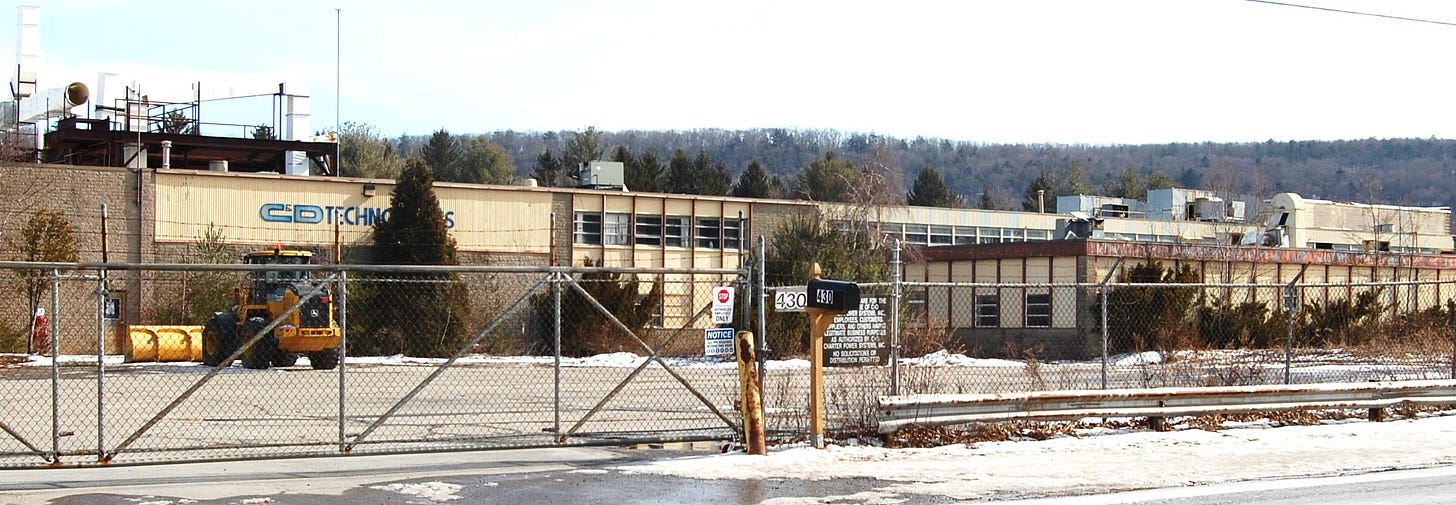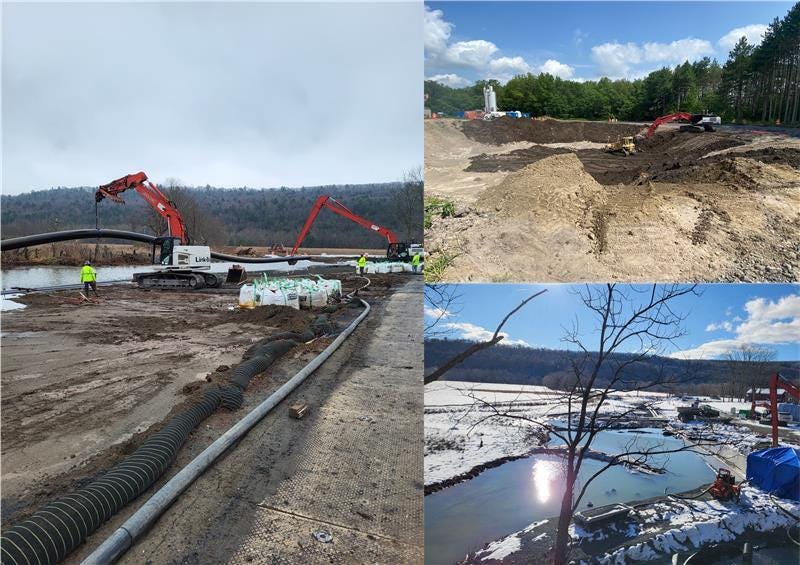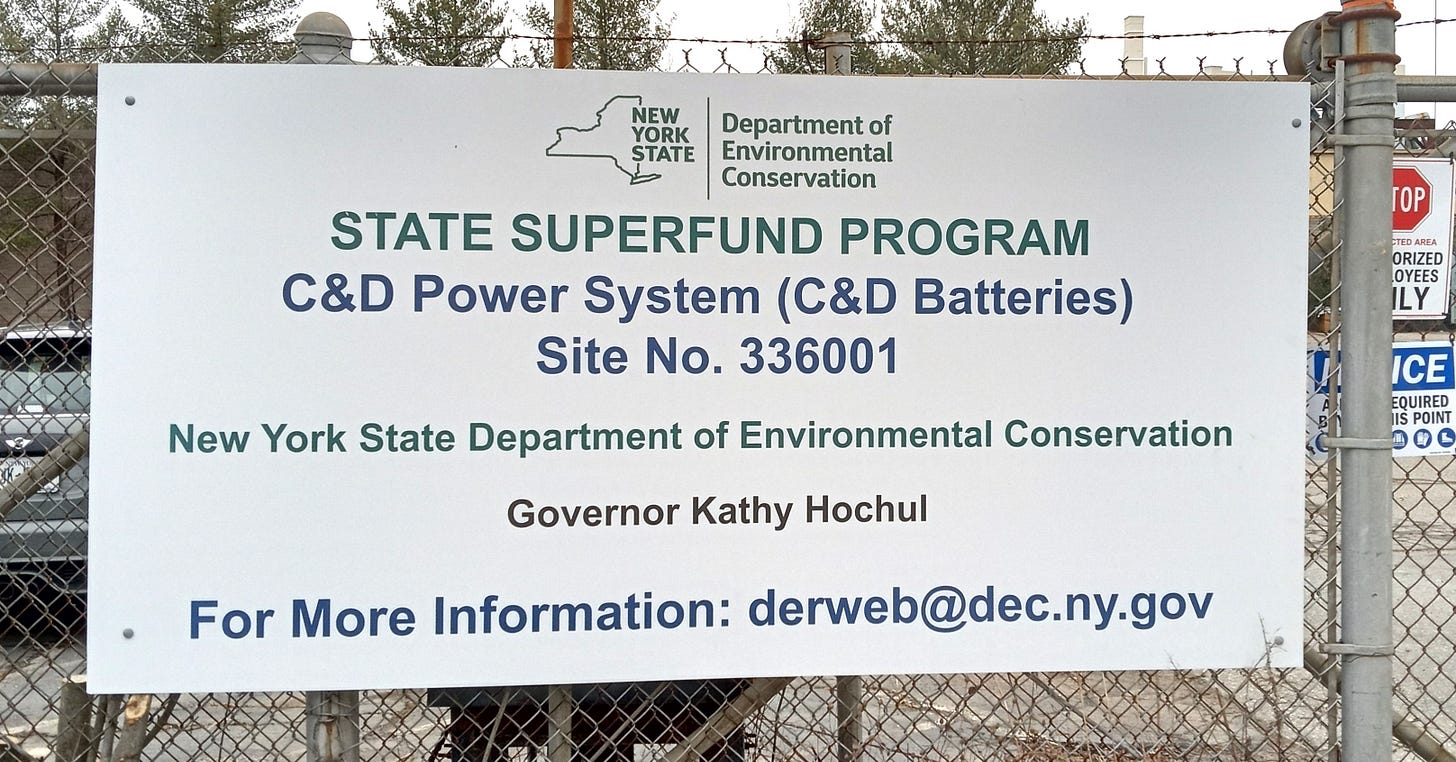By David Ofshinsky
After four decades of environmental toxicity, the $9.4 million cleanup of the C&D Battery Superfund site in Deerpark has been completed. At the site, the construction trailer and virtually all remedial equipment has been removed.
The State-funded cleanup of the site began in December 2023. The NYS Department of Environmental Conservation (DEC) issued a report last week detailing the project.
According to the report, soil from the contaminated lagoon was excavated to a depth of 4-6 feet and disposed of off-site.
Soil on-site with excess lead was excavated and stabilized. The remaining lagoon soils were solidified down to the groundwater table, approximately 28 feet below ground surface (bgs).
Areas with excess cadmium levels were solidified from the groundwater table to about 35 feet bgs.
To prevent exposure to any residual contamination, a site cover was installed.
Contaminated stream sediment was removed down to a depth of one foot along roughly a quarter mile of the stream bed.
More than 10,000 tons of Toxic Substances Control Act (TSCA) material were removed and disposed of off-site.
More than 2,500 cubic yards of contaminated tributary sediment were removed, stabilized and disposed of on-site within the former lagoon.
Four thousand cubic yards of on-site contaminated soil were removed, stabilized, and disposed of on-site within the former lagoon.
Almost 250,000 gallons of potable water were trucked in from a semi-local source, and no public water was used. The use of this water was minimized by recycling treated water on the site.
More than 15,000 tons of backfill and aggregate material were supplied by local suppliers.
The area is to be maintained and monitored for 30 years to ensure the contaminants have been isolated and contained. Nearby residential wells have been tested, and no contamination was detected.
The project included the restoration of more than an acre of wetlands. Plantings included 2,400 live stakes (live cut tree branches planted in soil), 2,000 bare tree roots, 800 potted shrubs and 200 potted trees.
The tributary restoration area connects to the Neversink River, which is a crucial tributary of the Delaware River. The Neversink plays a vital role in maintaining regional biodiversity, water quality, and hydrological balance. The restoration of the tributary focused on improving water quality, enhancing habitats and stabilizing riverbanks, to support the broader ecosystem and benefit both wildlife and local communities.
Threatened and endangered species live within a two-mile radius of the site. They include the bald eagle, Allegheny woodrat, brook floater and the timber rattlesnake.
The site has been identified as an area of archaeological sensitivity. More than 100 pre-historic and historic artifacts were recovered. They included fire-cracked rocks, waste material from creating stone tools and a stone tool typically used for cutting and scraping. These findings indicate that prehistoric activities such as cooking or heating took place in the area. Historic artifacts from the 19th and 20th centuries were also found.
The site is located within a community that has been identified as disadvantaged under the NYS Climate Leadership and Community Protection Act (CLCPA) criteria. This designation is based on a combination of environmental, economic, and demographic factors that indicate vulnerability to environmental and public health risks. The CLCPA aims to ensure that these communities receive equitable attention and resources in the state's efforts to combat climate change and promote sustainability.
The 17-acre site was first opened by Empire Tube Company in 1959 to manufacture black and white television picture tubes. It was purchased by C&D Technologies in 1970 and used to produce lead acid batteries. All operations ceased in 2006. After a series of environmental investigations between 1981 and 2008, it was designated as a Superfund site. PCBs, hydrofluoric acid, lead, barium, and cadmium were detected there.
In August 2024, the DEC announced a $7 million settlement with Avnet, Inc., for costs related to the remediation of the site. The former owner and operator of the site will pay $6.3 million towards the cost of remediation and $700,000 for Natural Resource Damages (NRD).
What does the future hold?
Deed covenants established by the DEC restrict the site to commercial or industrial use. At a July 14, 2021, Deerpark Planning Board meeting, Berel Krug, representing 430 Route 209 LLC, owner of the property, said that light manufacturing or a warehouse are possibilities.
A request to Mr. Krug for comment about plans for the site has not been answered.
Community focused news can only succeed with community support. Please consider the various subscription levels.





Another land tragedy in the Town of Deerpark finally addressed. Now we wait to see what comes next.